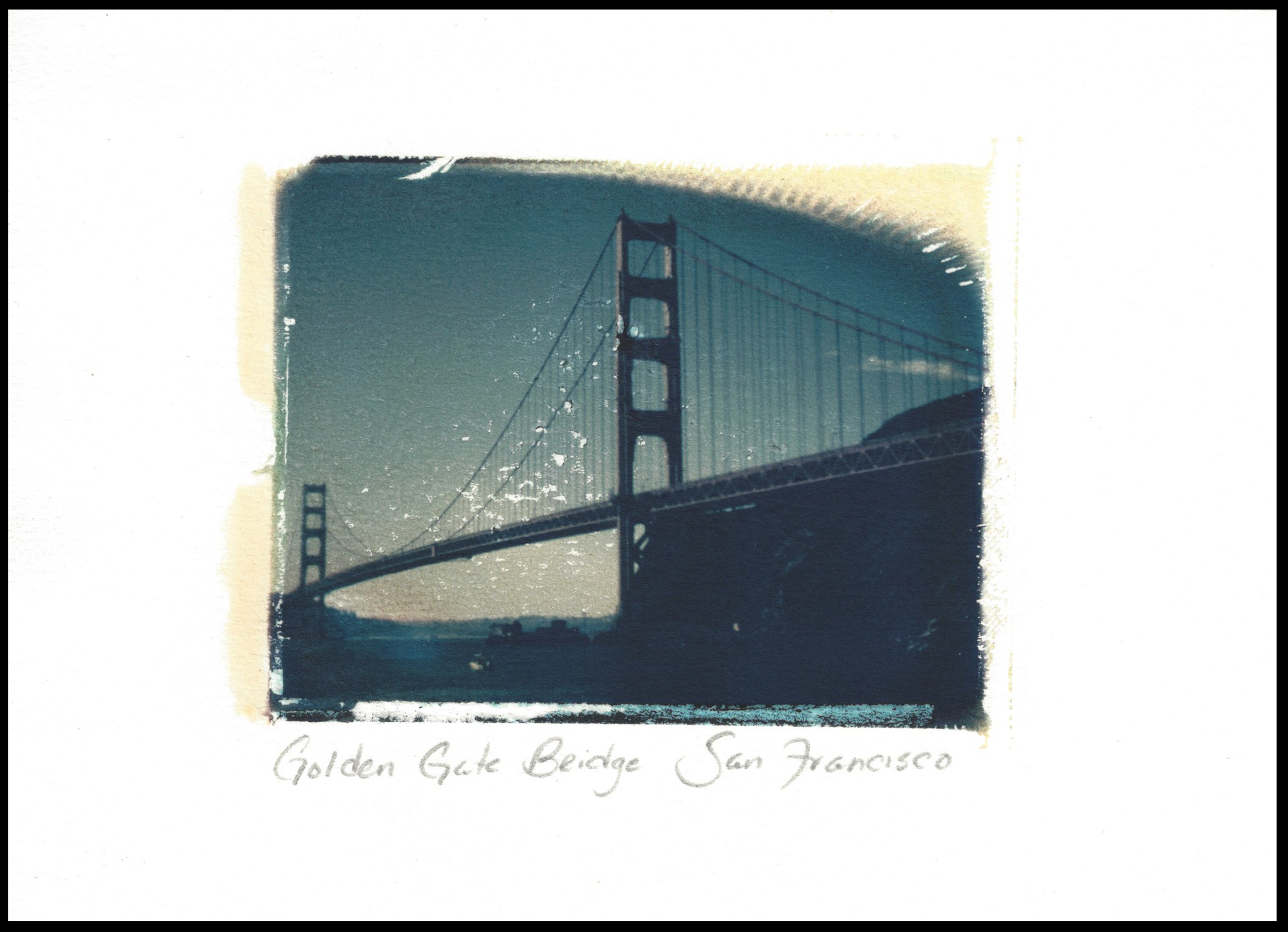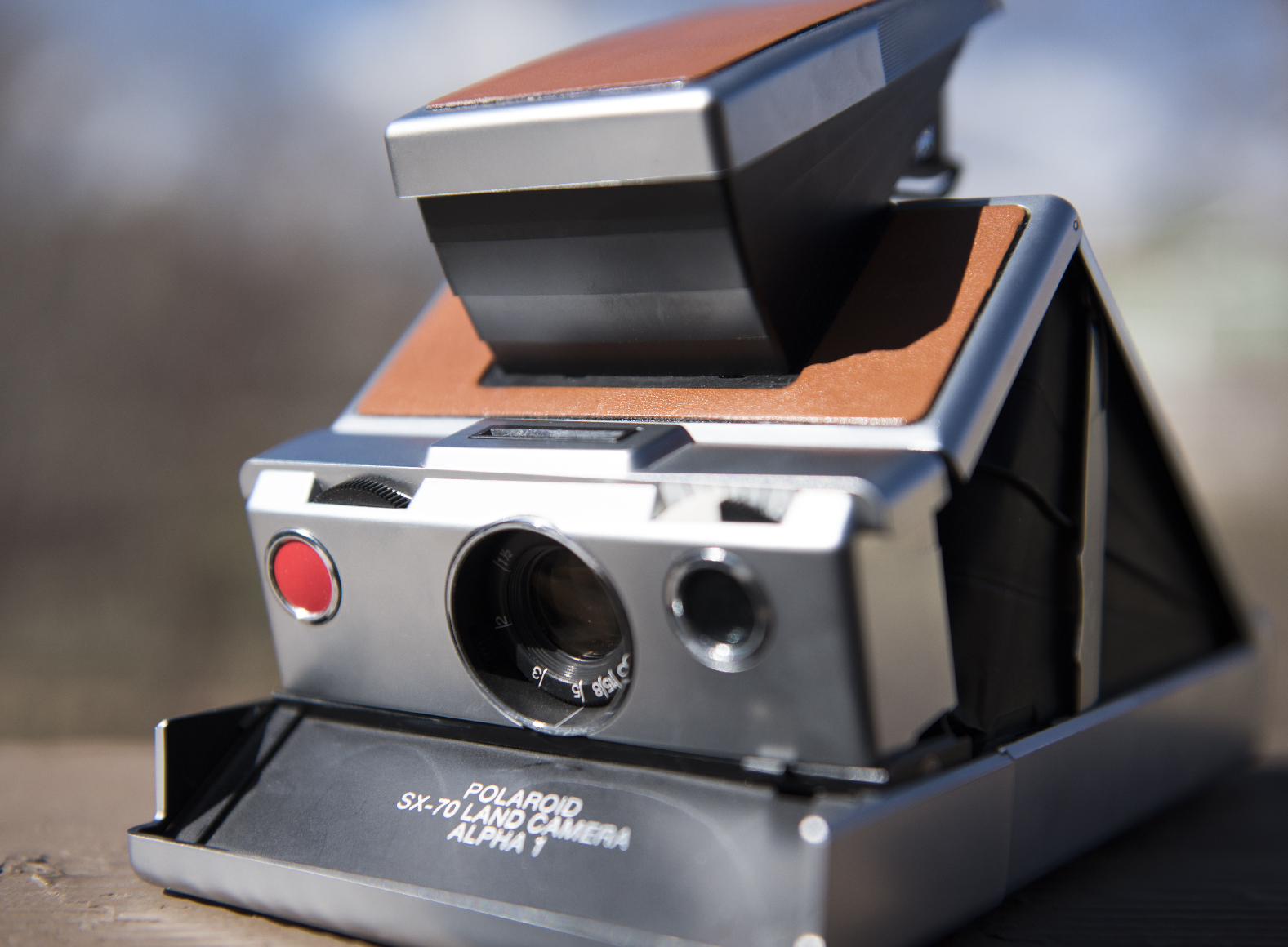
I scored this little beauty a couple weeks ago at an estate sale. I couldn’t test it, but on a hunch, I bought it for a song. At least what I consider a song, compared to what I’ve seen new SX-70 models going for by Polaroid junkies! I figured, I’d order a pack of film and test it. If it doesn’t work, it looks cool sitting on my shelf in all its leather glory, but if it works, endless fun! Polaroid first produced these SX-70 models in 1972.
Just before I gave ordering the film a second thought, I stumbled upon a box of this glorious film here in Colorado Springs! I went to the annual Swap and Shop at Godec’s this past Saturday and spotted the Impossible Project’s Instant Color Film for SX-70 cameras! That’s it! I bought one just to test the camera. I had eight pictures to see if the camera is working, and if the “lighten/darken control” worked properly.
I got home, put the film pack into the camera, and it instantly (no pun intended) came to life! The dark slide spit out with a beautiful quote imprinted on top,
“What is the beautiful, if not the Impossible.” – Gustave Flaubert (1821-1880)
So, I started taking photos…and learned quite a bit about the differences in this “new” Polaroid film versus the stuff I used to play with. First, the “instant” isn’t so instant. The Impossible Project recommends quickly shielding the image from light, then waiting 30-40 minutes for development. I don’t remember it taking that long way back when. Oh, and no shaking. Sorry Outkast, no more “Shake it like a Polaroid picture.” Not that shaking it ever did anything to speed up the process.
In 1972, Polaroid created this film that was fully contained in response to the public’s concern for ecology. Really, quite revolutionary and before its time as today, we love anything we can recycle. It’s all about the environment. The SX-70 was considered a waste-free system as it was self-contained, exposed and processed within minutes.
When I finished making my eight exposures, chemistry packs neatly contained within my final images, I tore apart the film pack holder to see what I could recycle. The answer is, everything. The exterior is plastic so I tossed that into recycle. The thin aluminum “spring” the SX-70 film sits on, I pulled that out and tossed it into recycle. Finally, the battery pack. I pulled those apart and took them over to Interstate Battery today for recycle, and yep, the fella there took them! So, the whole darn thing is recycled. I admit I kept the cute cardboard box it all came in and the ultra cool, quote-inspired dark slide.
Now a bit about what I learned. First, the film should be refrigerated when not used. So, good to buy fresh and refrigerated as the color isn’t very stable. Also, this film has a “production date” stamped on the box and the Impossible Project says to use within a year of that date. I’d say it’s probably safer to go less time. My images did not have the vibrancy I remember with some Polaroid. But that won’t dissuade me, I plan to buy more, and test their new B&W version too!
Of my eight exposures, I tested the lighten/darken control and it worked, I definitely got two overexposed and two underexposed images. I also got a few I liked…nothing special, just some fun to share here. My favorite, of course, is my Maggie. She is always so patient with posing for me. Then I took two of “yard art.” One is a bright orange metal flower we have in the yard. And, the second, an abstract look at one of my husband’s abstract outdoor sculptures.
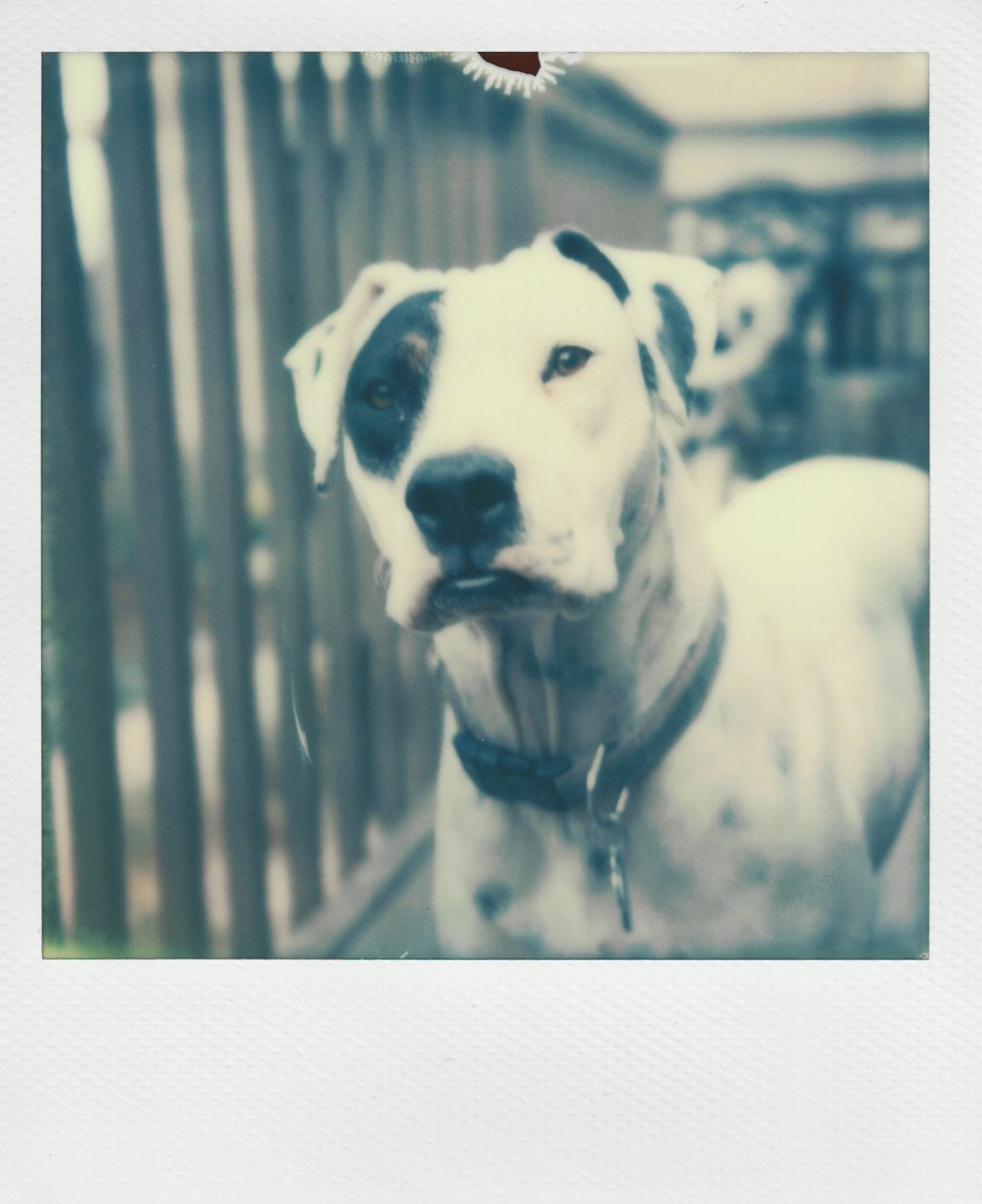
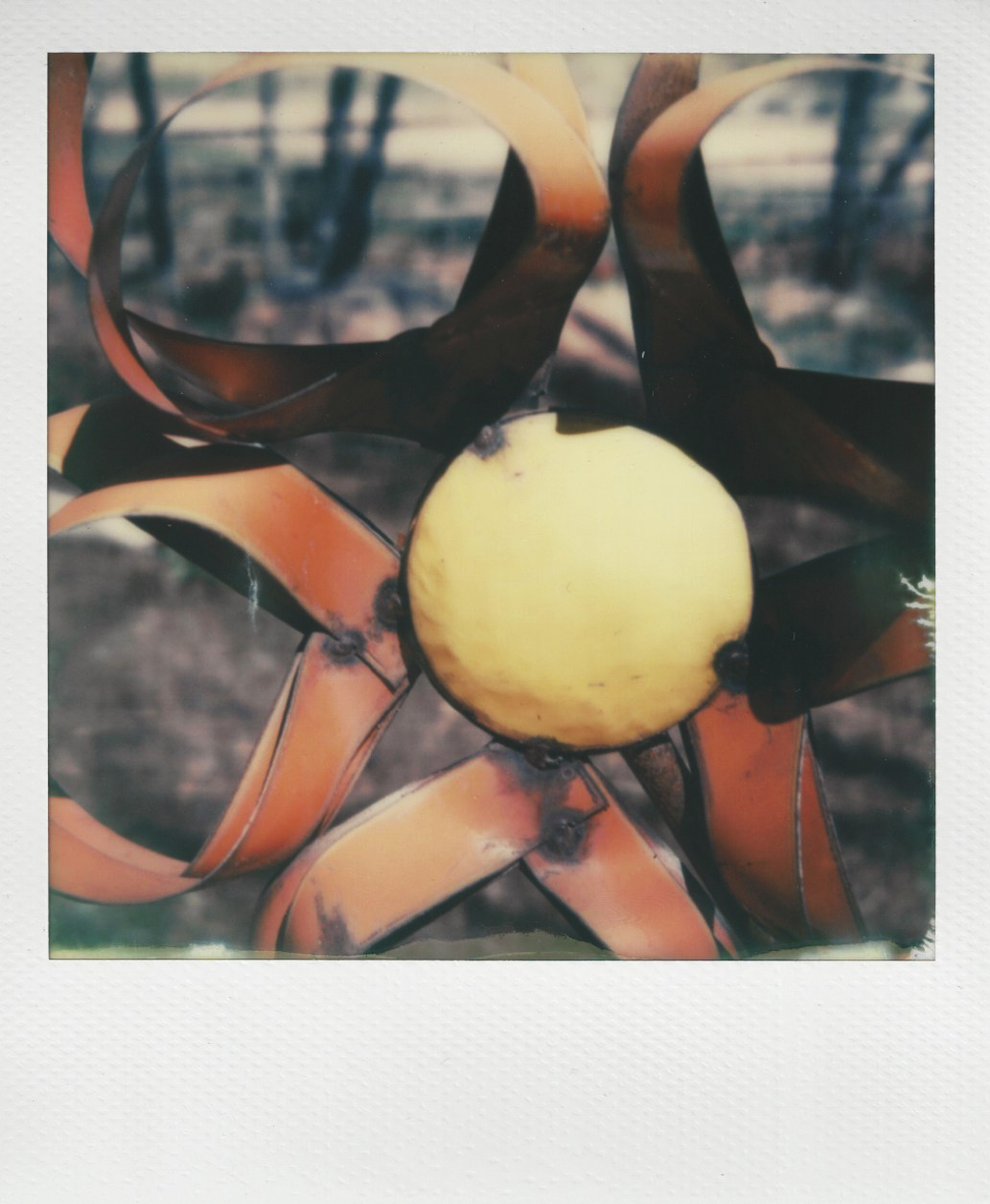
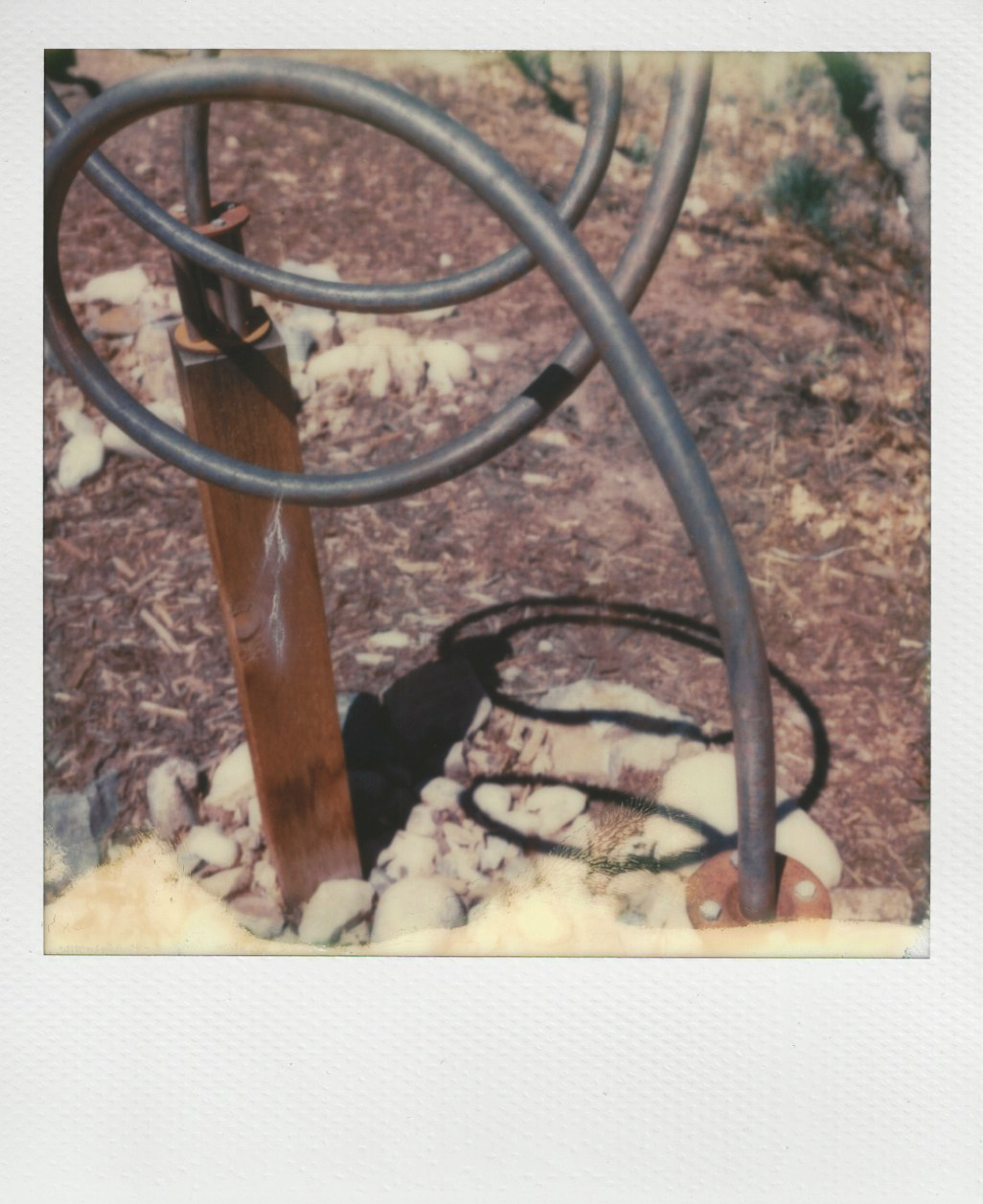
So, here is to Polaroid, and Edwin Herbert Land! Mr. Land invented the first in-camera instant photography and co-founded Polaroid. And, an early Happy Birthday to him, as his birthday is May 7th (1909).
I also pulled one from the archives to share. Here’s a Polaroid transfer I did using the peel-apart, two-part film. Loved the stuff…made the exposure, pulled apart immediately, tossed the print and slapped the negative down on a treated piece of art paper and magic! A Polaroid transfer! This one created with a contraption that let me expose 35mm slides onto Polaroid film. I still own this contraption!
